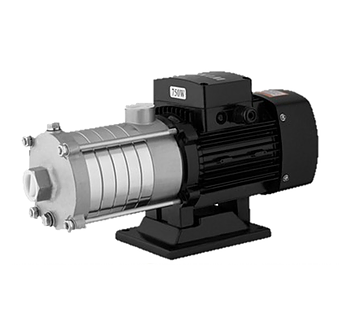An in-line centrifugal pump is a crucial piece of machinery widely used in various industrial and commercial applications for moving fluids. Its design and functionality make it an effective choice for processes requiring consistent and reliable fluid transfer. Here's a detailed overview of its features, working principles, advantages, and common applications.
Design and Structure
An in-line centrifugal pump is characterized by its compact and streamlined design, where the pump casing is aligned with the pump shaft. This design enables a more efficient and space-saving setup compared to other pump configurations. The main components of an in-line centrifugal pump include:
- Impeller: The rotating component that imparts kinetic energy to the fluid, increasing its velocity.
- Pump Casing: A housing that directs the fluid flow and converts the kinetic energy from the impeller into pressure energy.
- Shaft: Connects the impeller to the motor and transmits rotational energy.
- Bearing Assembly: Supports the shaft and reduces friction.
- Mechanical Seal: Prevents leakage of the fluid from the pump casing.
Working Principle
The operational principle of an in-line centrifugal pump is based on centrifugal force. When the pump is in operation, the impeller, which is attached to the rotating shaft, spins rapidly. As the impeller rotates, it creates a centrifugal force that pushes the fluid outward from the center of the impeller to the outer edges. This movement increases the fluid’s velocity.
The pump casing, designed to guide the fluid flow, then converts the velocity energy into pressure energy as the fluid is directed to the discharge outlet. The result is a continuous flow of fluid from the inlet to the outlet, with increased pressure to facilitate movement through pipelines or systems.
Advantages
In-line centrifugal pumps offer several benefits:
- Compact Design: Their streamlined structure allows for installation in tight spaces, making them ideal for environments with limited space.
- High Efficiency: The design minimizes energy losses, ensuring efficient fluid transfer.
- Low Maintenance: The in-line configuration reduces the complexity of maintenance tasks. Additionally, the pump's simplicity leads to fewer wear-and-tear issues.
- Versatility: They can handle a wide range of fluids, including water, chemicals, and other liquids, depending on the material used in their construction.
- Cost-Effective: Lower installation and operational costs make them a popular choice for various applications.
Applications
In-line centrifugal pumps are used in numerous applications, including:
- Water Supply Systems: They are commonly used in municipal water supply systems and irrigation.
- HVAC Systems: They help circulate water in heating, ventilation, and air conditioning systems.
- Industrial Processes: They are used to transfer chemicals, oils, and other fluids in manufacturing and processing industries.
- Building Services: They are employed in building services for applications like fire protection systems and hot water circulation.
Conclusion
In-line centrifugal pumps play a vital role in fluid handling systems across different industries. Their design offers a compact, efficient, and low-maintenance solution for a variety of fluid transfer needs. Understanding their working principle and advantages can help in selecting the right pump for specific applications, ensuring optimal performance and reliability.
